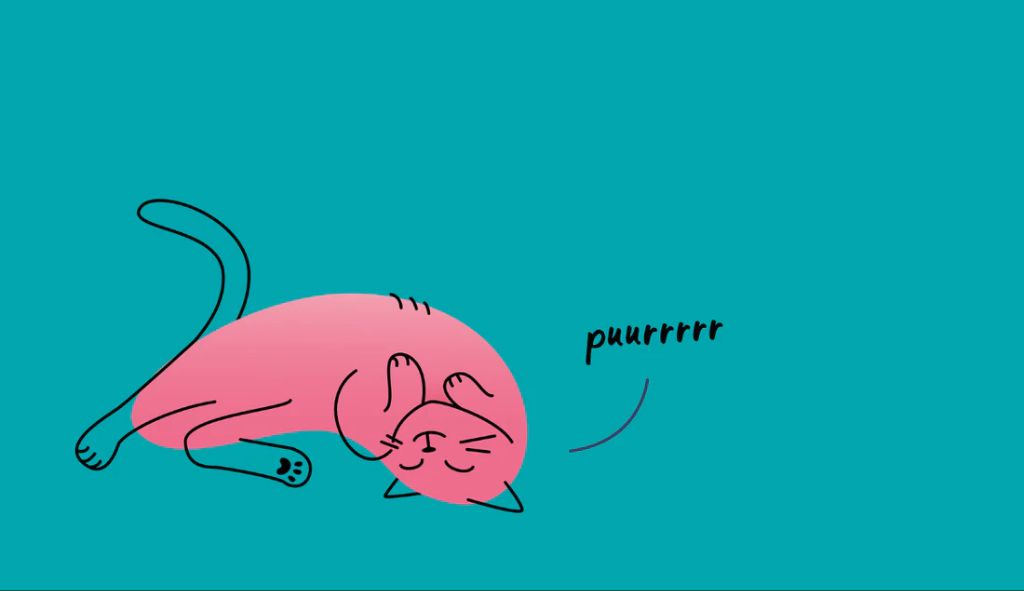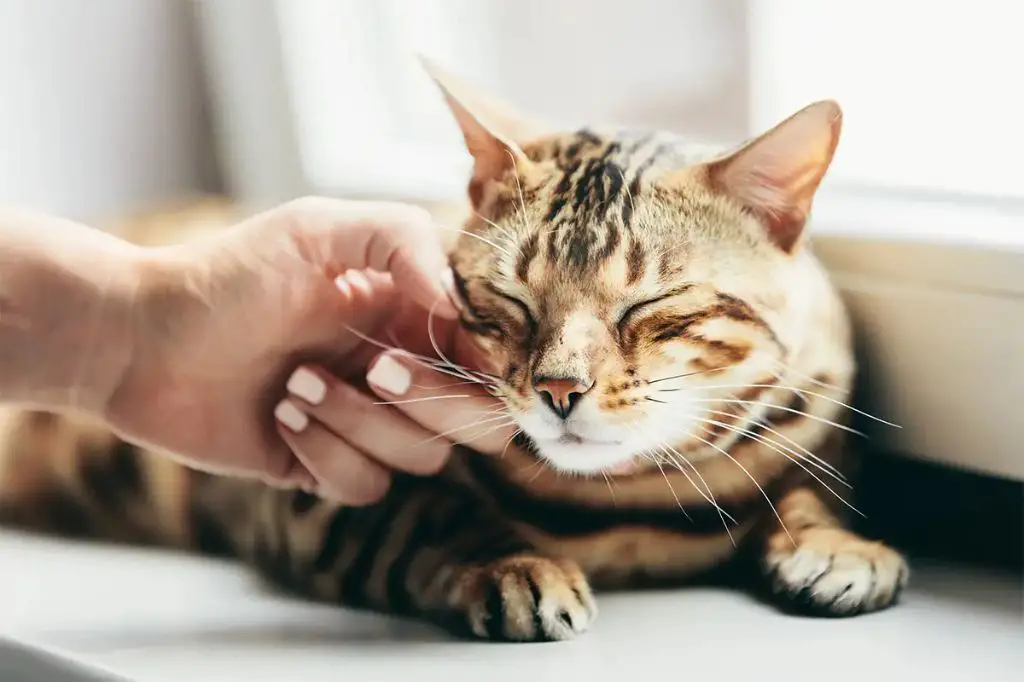The idea that cat purrs have healing properties is an intriguing claim that has circulated for many years. While cats have long been observed purring in soothing situations, some have suggested that the low, rhythmic frequencies of purrs can provide therapeutic effects for both felines and humans. Proponents believe that exposure to these sounds can promote bone density, tissue regeneration, and pain relief. However, the notion that purrs possess vibrational frequencies capable of healing remains controversial. More research is needed to substantiate assertions about the curative powers of purrs.
In this article, we will explore the background of this claim, analyzing evidence from scientific studies, anecdotal reports, and first-hand accounts. By reviewing available data and perspectives, we can better understand whether current findings support or refute the belief that cat purrs have verifiable healing properties.
The Science of Purring

Cats purr using their larynx and a unique organ called the “hyoid.” When breathing in and out, muscles in the larynx open and close the air passage rapidly, causing vibrations that create the purr sound. Unlike most other mammals, cats have a flexible hyoid that allows them to purr continuously during inhalation and exhalation (Source).
It is believed that purring evolved in cats as a mechanism for communication and self-healing. The frequencies of feline purring fall between 25 and 150 Hertz, overlapping the frequencies used in ultrasound therapy and bone growth stimulation. Thus, purring may promote healing and pain relief in cats by stimulating muscles and bones (Source).
Purring Frequencies
The range of frequencies in a cat’s purr have been studied by researchers to better understand their potential effects. Studies have shown that domestic cats tend to purr within a frequency range of 25 to 150 Hertz (Hz) https://wildnet.org/theres-magic-in-that-purr/. For comparison, the range of human hearing is typically 20 Hz on the low end to 20,000 Hz on the high end. This means the majority of cat purrs fall well within the audible range for humans.
Specifically, most cat purrs contain a dominant frequency between 25-50 Hz according to research https://www.scienceworld.ca/stories/secret-power-cats-purr/. This low, rhythmic frequency has been hypothesized to provide various benefits, which we will explore in more detail in the following sections.
Effects on Humans

Several studies have explored the potential healing effects of cat purring on humans. A study found that cat purrs may lower blood pressure and decrease anxiety in humans who interact with purring cats. The low frequencies of cat purrs, between 25-50Hz, overlap with frequencies that have been shown to promote bone density and healing.
Research by Dr. Clinton Rubin found that low-frequency vibrations, similar to the frequencies in a cat’s purr, increased bone density and promoted healing of fractures in humans. While the direct effects of a cat’s purr on human health require more research, these findings suggest the vibrations may impart some benefits.
In addition to physical effects, multiple studies have shown psychological benefits of cat purring. Stroking or interacting with a purring cat has been linked to reduced stress and lower blood pressure. The rhythmic nature of purring may have a calming effect, similar to meditation. Cat ownership in general has also been associated with lower stress, anxiety, and loneliness.
While more research is still needed, these preliminary studies point to potential physical and mental health benefits of cat purring for humans. Interacting with a softly purring cat may impart some therapeutic effects by lowering stress responses and possibly promoting healing through low-frequency vibrations.
Healing Effects on Cats
Research has shown that a cat’s purr provides healing effects for cats themselves. When cats purr, they release endorphins in their brains which serve as natural pain relievers [1]. Endorphins can help cats manage pain and promote healing from injuries or illness. The frequencies of feline purring have been associated with increased bone density and tissue regeneration [2]. This allows cats to self-heal from minor injuries or strains more quickly.
It’s believed that purring may be an adaptive mechanism to stimulate healing for injuries sustained while hunting or fighting. The rhythmic vibrations help cats cope with pain or discomfort and accelerate their natural healing abilities. Cats have been observed purring when giving birth, nursing kittens, or recovering from accidents – all situations where endorphins would help manage pain and speed up recovery. So a cat’s purr allows it to self-soothe and promote internal wellness.
Anecdotal Evidence

While scientific studies on the healing effects of cat purring are still limited, many cat owners over the years have shared anecdotal accounts of their cats helping them heal from various ailments. These healing experiences, though not confirmed by rigorous research, suggest potential benefits of cat purring that warrant further investigation.
Some cat owners describe noticing improvements in conditions like headaches, anxiety, joint pain, and even serious illnesses when their cat purrs near the affected area of the body. There are stories of cats seemingly detecting illnesses in their owners before doctors, and purposely lying near the location to provide comfort with their rhythmic rumbling. Though anecdotal, these accounts point to cats possibly having an innate ability to help with healing through their purring.
For example, a 2015 Washington Post article shared the story of a cat owner named Oscar who was hospitalized with a severe pancreatitis attack. Oscar’s owner claimed that whenever the cat lay on her abdomen and purred, she felt noticeable pain relief and improvements in her condition.[1] While not scientific proof, many similar anecdotes seem to suggest potential healing effects of purring.
More research is still needed to confirm if these cat owner accounts reflect true medical benefits. But the prevalence of such anecdotal stories indicates value in further exploring the healing potential of cat purrs.
Criticisms and Concerns
There are some arguments against the hypothesis that cat purrs have healing properties. A key criticism is a lack of rigorous scientific evidence supporting the healing ability of cat purrs. Many of the claims rely on anecdotal reports rather than controlled studies. While cat purrs may fall within a range of frequencies that could have therapeutic potential, there is a need for more research to provide conclusive proof.
Some skeptics argue that the power of the purr alone is unlikely to provide significant healing effects, as the vibrations produced would be localized only where the cat makes direct contact. The purr frequencies dissipate rapidly over distance, reducing potential benefits. Additionally, cats would likely need to purr for prolonged periods to produce any meaningful impact.
There are also concerns that hype around the healing power of purrs could lead to unrealistic expectations or exploitation of cats. Owners may put cats in stressful situations or force them to purr in hopes of a health benefit. However, cats purr for multiple reasons and it should not be assumed they intentionally purr as a healing mechanism.
While an interesting hypothesis, the claim that cat purrs have healing properties requires much more research. There is not yet convincing evidence that a cat’s purr provides significant therapeutic value for humans or other animals. Controlled clinical studies are needed to truly assess this popular notion.
Purr Therapy
According to some studies, using cat purrs in therapeutic settings can provide benefits for humans. The sound frequencies of purring fall within a range that can promote bone density and tissue regeneration, and the vibrations can provide soothing effects that lower stress and anxiety levels (https://www.purrfectpost.com/healing-purrs-how-your-cat-can-help-you-heal/).
Purr therapy utilizes these aspects of cat purring by bringing cats into hospitals, nursing homes, schools and other care facilities. Interacting with purring cats has been shown to lower heart rates and blood pressure in humans, which can aid healing. The reduced stress and anxiety from spending time with purring cats also helps improve patient moods and outlooks.
Some studies have specifically focused on using cat purrs in therapy for dementia patients, who experienced increased socialization, mood, and calmness when exposed to recordings of purring cat sounds. The vibrational frequencies may even help promote brain wave activity. More research is needed, but initial studies show promising possibilities for therapeutic applications of cat purrs.
Further Research

While there is some evidence that cat purrs may have healing properties, more research is still needed. Some future studies that could help investigate this topic further include:
Controlled trials with larger sample sizes to determine the effects of cat purrs on specific health conditions in humans, such as pain levels, infection rates, wound healing, or anxiety. These studies could compare purring exposure to a control group to isolate the effects of the purrs themselves.
Investigating the specific frequencies and sound qualities of purrs that may have healing effects. This could lead to isolating the most beneficial acoustical properties.1
Research into the physiological mechanisms by which cat purrs might provide health benefits, such as influencing brain wave patterns, respiration, heart rate variability, or immune system activity. Understanding the underlying mechanisms could help optimize the therapeutic use of cat purrs.
Studying effects on animal health, for example whether cat purrs accelerate healing in other cats, dogs, or livestock. This could provide broader evidence beyond effects on humans.2
Surveys to collect large-scale anecdotal evidence from cat owners on perceived healing effects of purrs. Though not as scientifically rigorous, anonymized self-reports could point to promising areas for controlled studies.
Research into replicating the frequencies and sound features of natural cat purrs artificially for therapeutic purposes. This may enable controlled delivery without live cats present.
Overall, a combination of experimental studies on health outcomes, mechanistic research, and surveys to gather user accounts can help paint a more complete picture of the potential healing effects of cat purrs.
Conclusion
After reviewing the available research, it appears that cat purring may offer some therapeutic benefits, but more studies are needed before any definitive claims can be made. The precise frequencies of feline purrs fall within a range that has been associated with healing effects in humans and other animals. However, the mechanisms behind these potential effects remain unclear. While some initial studies on bone density in cats suggest purring may provide physical healing benefits for the cats themselves, this has not been conclusively proven. Much of the evidence for the soothing, calming effects of cat purrs on humans remains anecdotal. Controlled studies are still needed to truly demonstrate measurable healing outcomes specifically attributable to cat purrs. Overall, cat purring shows some promise as a natural therapeutic tool, but more research is required to fully understand if and how purrs may have physically and emotionally healing properties.

